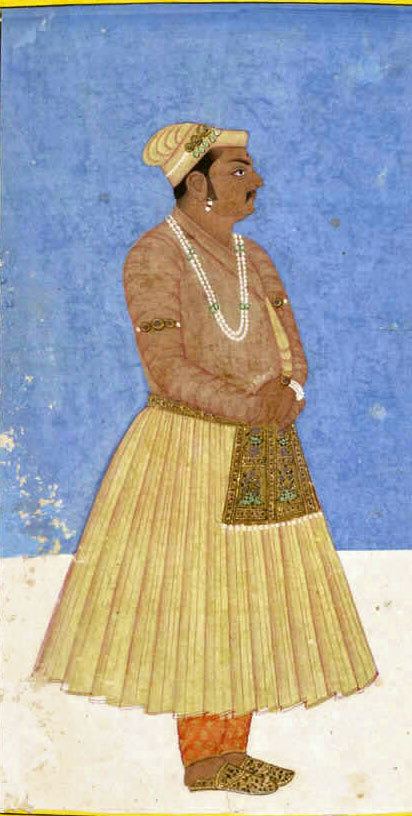 | ||
Navaratnas Nauratan (Sanskrit dvigu nava-ratna- or "nine gems") was a term applied to a group of nine extraordinary people in an emperor's court in India. The well-known Navaratnas include the ones in the courts of the legendary emperor Vikramaditya, the Mughal emperor Akbar, and the feudal lord Raja Krishnachandra.
Contents
Vikramaditya's Navaratnas
Vikramaditya is a legendary emperor, who is said to have ruled from Ujjain. According to folk tradition, his court had 9 famous scholars.
The earliest source that mentions this legend is Jyotirvidabharana (22.10), a treatise attributed to Kalidasa. According to this text, the following 9 scholars (including Kalidasa himself) attended Vikramaditya's court:
However, Jyotirvidabharana is considered a literary forgery of a date later than Kalidasa by multiple scholars. V. V. Mirashi dates the work to 12th century, and points out that it could not have been composed by Kalidasa, because it contains grammatical faults. There is no mention of such "Navaratnas" in earlier literature. D. C. Sircar calls this tradition "absolutely worthless for historical purposes".
There is no historical evidence to show that these nine scholars were contemporary figures or proteges of the same king. Vararuchi is believed to have lived around 3rd or 4th century CE. The period of Kalidasa is debated, but most historians place him around 5th century CE. Varahamihira is known to have lived in 6th century CE. Dhanavantari was the author of a medical glossary (Nighantu); his period is uncertain. Amarasimha cannot be dated with certainty either, but his lexicon utilizes the works of Dhanavantari and Kalidasa; therefore, he cannot be dated to 1st century BCE, when the legendary Vikramaditya is said to have established the Vikrama Samvat in 57 BCE. Not much is known about Shanku, Vetalabhatta, Kshapanaka and Ghatakarpara. Some Jain writers identify Siddhasena Divakara as Kshapanaka, but this claim is not accepted by historians.
Kalidasa is the only figure whose association with Vikramaditya is mentioned in works earlier than Jyotirvidabharana. Rajasekhara's Kāvyamimāṃsa (10th century), Bhoja's Sringara Prakasa (11th century) and Kshemendra's Auchitya-Vichara-Charcha (11th century) mention that Vikramaditya sent Kalidasa as his ambassador to the Kuntala country (identified with present-day Uttara Kannada). The historicity of these legends is doubtful.
Akbar's Navaratnas
The Mughal ruler Akbar, despite his illiteracy, was a great lover of the artists and intellectuals. His passion for knowledge and interest in learning from great minds attracted him to men of genius to his court. Nine of these courtiers were known as Akbar's navaratnas (or nine jewels).
Raja Krishnachandra's Navaratnas
Raja Krishnachandra was a ruler of Bengal, who ruled over Nadia from 1727 to 1772. According to legend, his court had 9 famous scholars, who are mentioned as 'Navaratnas'. These included:
Similar groups
Many famous emperors in India had courtiers labeled in similar ways. For example, the valuable members of the court of Krishna Deva Raya were termed Astadiggajas, the eight giants. Lakshman Sen the ruler of the Sena Empire had Pancharatnas (meaning 5 gems) in his court; one of whom is believed to be Jayadeva, the famous Sanskrit poet and author of Gita Govinda. Ashtapradhan was the title given to the council of Shivaji.
